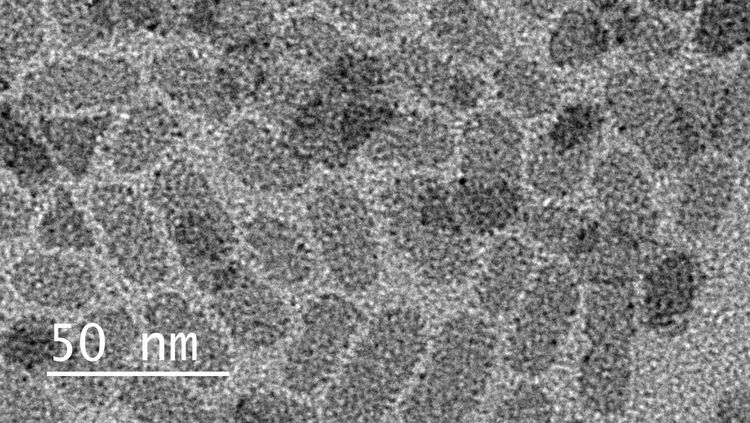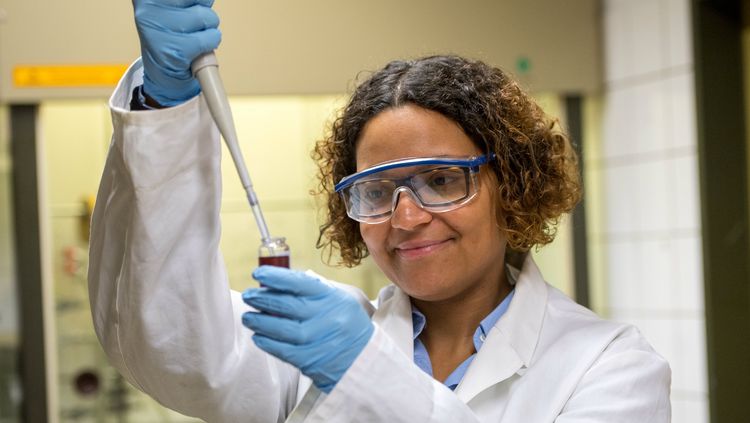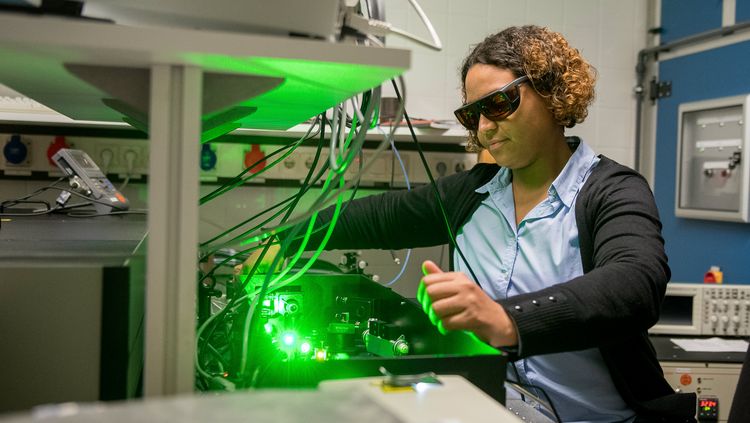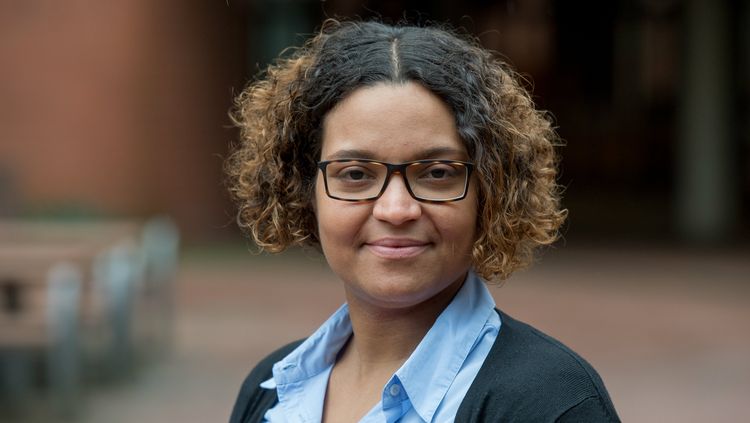Doctor of chemistry Jannika Lauth was awarded a Carl von Ossietzky Young Researchers' Fellowship earlier this year. In her research Lauth produces tiny semiconductor sheets which can conduct electricity when light is shone on them. She is using innovative laser methods to study these two-dimensional nanoparticles. Potential applications include ultrathin solar cells, high-speed transistors and energy-saving LEDs.
Dr. Jannika Lauth is fascinated by the unique laws that govern the nano world. She talks about Dirac fermions, quantum dots and excitons as if they were the kind of thing everyone talks about. Lauth’s speciality is unusually shaped semiconductors. She uses compounds such as lead sulphide, indium phosphide, or indium selenide to synthesize tiny sheets consisting of a few or even just a single layer of atoms.
The square or hexagonal structures the 33-year-old researcher is studying are called two-dimensional (or 2D) nanomaterials because, like a sheet of paper, they are extremely thin relative to their lateral dimensions. The particles in question are just a few billionths of a metre (nanometres) in size. The physical properties of such tiny particles frequently differ from those of larger solids: gold nanoparticles, for example, look red rather than golden, and tiny copper particles are extremely hard and are not flexible. With the nano semiconductors of the type Lauth is studying, the gap between the energy levels, the so-called bandgap, is larger in comparison to solids. This also alters the electronic properties of a material.
Highly mobile charge carriers
Jannika Lauth’s main area of interest is 2D particles that become conductive when light is shone on them. “These semiconductors could be used to produce ultra-thin, flexible solar cells,” the chemist says. Other potential applications are high-speed transistors and energy-saving LEDs. The applications vary depending on the size of the nanosheets: for solar cells and transistors, which require high-speed switching, slightly thicker nanosheets with highly mobile charge carriers are more suitable. For LEDs, on the other hand, ultra-thin semiconductor sheets would be more suitable. In this way chemists can adjust the physical properties of a material to a certain degree to meet their requirements.
Lauth has specialised in the production of nanoparticles ever since she completed her Diplom thesis at the University of Hamburg. In 2010, researchers there discovered almost by chance that under certain circumstances tiny crystals would connect to form two-dimensional structures. Lauth has continued on this path since she was a post-doctoral researcher. In order to produce sheet-shaped nanoparticles she uses dissolved salts to synthesize so-called colloids – tiny particles covered in organic molecules. “Nanoparticles are basically somewhere between molecules and solids,” Lauth explains. The organic coating stabilises their fragile state and prevents the nanoparticles from immediately combining to form larger particles. By using different types of organic attachments and adjusting temperatures, Lauth is able to make the particles grow horizontally rather than vertically. She is now able to create all kinds of 2D nanocrystals and has already achieved her goal of reducing the thickness of the sheets to a single layer of atoms in a number of materials.
Because she not only wanted to produce such particles, but also to gain a better understanding of their unusual electronic properties, Lauth spent her post-doctoral period at the Delft University of Technology in The Netherlands learning different characterisation techniques based on laser physics. “I did a mini degree in physics in Delft, so to speak,” she says.
Testing without touching
In Delft she also developed a technique for separating nanoparticles from their organic attachments and then using them to produce a thin film. Thanks to the use of spectroscopic techniques these substances can be tested in both their soluble and film form without being touched. “This allows us to find out which materials are useful without having to produce large quantities of them,” she explains.
Lauth has just transferred to the University of Oldenburg and now plans to set up her own group of junior researchers at the Institute of Chemistry. She wants to continue developing 2D semiconductors and for example produce sheets that are free of heavy metals like lead, and characterise them using spectroscopy. In February, she was awarded a Carl von Ossietzky Young Researchers’ Fellowship by the University that includes three years of start-up funding. Professor Dr. Katharina Al-Shamery, who mediated Lauth’s transfer to Oldenburg, is delighted with the new addition to the Institute’s staff. “Jannika Lauth is an excellent, ambitious scientist whose interdisciplinary research at the interface between materials synthesis and laser physics is generating a high level of international interest.”




